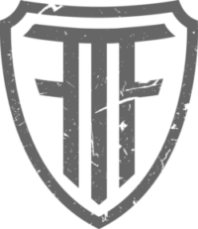Healthy communities foster healthy warriors.[1] David knew this well. He was surrounded by a supportive community (1 Sam 18:16, 22:2). He loved gathering with his people for worship and ached for it when he was unable to do so (Pss 23:6, 26:8, 27:4, 69:9, 116:17-19, 122:1). He was part of a tight-knit band of brothers (2 Sam 23:8-39; 1 Sam 22:2),[2] had an inner circle of companions he could trust. (1 Sam 18:1-4, 19:1, 20:17, 23:16; 2 Sam 23:8-12),[3] and was surrounded by a plethora of wise advisers (1 Chron 27:32-34; 1 Sam 25:23-31; 2 Sam 8:15-17, 12:1-13, 14:1-21).[4]
Israel was a warrior community, it knew the gravity of sending its men to fight (Deut 20:5-9) and the importance of bringing them home well (1 Sam 18:6-7; Num 31:19-20).[5] Collectively, the Israelite community absorbed the responsibility and consequences for its warfighting men. Informed by the Mosaic rituals that prepared men for combat, empowered them in battle, and sought to return them whole, this community knew how to take care of its own.[6]
Research bears out the critical importance of community at all levels for those in the profession of arms.[7] Strong relational connection is linked to trauma recovery.[8] Isolation, however, exacerbates the physical, mental, and spiritual complications of combat exposure.[9] David knew the protective and healing power of a worshipping community, a war-intelligent nation, close battle buddies, intimate friends, and wise counselors. His social support template for warfighter health is textbook, and it is an absolute must for military members today.
[1]Susan French’s research explores warrior cultures and how they shaped and cared for their fighters. She shows that healthy warriors come from healthy communities. Susan E. French, The Code of the Warrior: Exploring Warrior Values Past and Present (New York: Rowman & Littlefield Publishers, 2003), 10.
[2]“We can therefore presume with considerable certainty, that a military elite of heroes was established while David was still the captain of a band, and that this elite—the thirty warriors closest to the captain—had formed a kind of supreme command.” Mazar further notes the diversity of the mighty men: “It becomes clear that thirteen out of the Thirty are from Bethlehem and its environs; five others are from various cities in the Judean mountains or from the families of Caleb in Southern Judaea; one is from Beth Ha’arabah in the Judean Desert near Jericho; and two are from the Northern Negeb (the tribe of Simon)…we should note that of these seven heroes one is an Ammonite; three, including the armor-bearer of Joab, are apparently of Hivvite origin; one is a Hittite; one a Hagarite (or a Gadhite); and one is of unknown origin. These seven were perhaps added on to the Thirty to serve as officers over foreign mercenary units in David’s army. This occurred before the formation of the bodyguard (mishma’ath) comprised of the Kerethites and the Pelethites, a troop of Philistine origin commanded by Benaiah son of Jehoiada.” This insight speaks to the bond that combat creates, a connection that cuts across race, culture, politics and economics. B. Mazar, “The Military Elite of King David,” Vetus Testamentum 13, no. 3 (1963): 310, 318-319. See also, Moshe Garsiel, “David’s Elite Warriors and their Exploits in the Books of Samuel and Chronicles,” The Journal of Hebrew Scriptures 11 (2011): 2-28.
[3]Patrcia Tull notes similarities between David and Jonathan’s initial battle stories: “Each, armed with little more than valiance and faith, trounces stronger enemies, one need not wonder that he found in David a kindred spirit.” Patricia K. Tull, “Jonathan’s Gift of Friendship,” Interpretation 58, no. 2 (2004): 134. According to Grimell, “David also cultivated deep friendships with battle buddies, for example Saul’s son Jonathan; he and David developed a rare friendship and trust for each other.” Grimell, “Contemporary Insights from Biblical Combat Veterans,” 246.
[4]“The accounts in the books of Samuel and Kings suggest that the prophets Gad and Nathan brought divine messages or personal counsel to or for King David with some regularity and that their words were valued. Being concerned about the legitimacy and well-being of the king, Gad and Nathan are portrayed as counselor or crisis intervention specialists as well as transmitters of oracles.” Dong-Young Yoon, “The Role of Prophets Gad and Nathan in the Davidic Court,” Korean Journal of Christian Studies 109 (2018): 14. See also, Larry L. Lyke, King David with the Wise Woman of Tekoa: The Resonance of Tradition in Parabolic Narrative (Sheffield: Sheffield Academic, 1997), 186-193.
[5]“Warfare was at the forefront of ancient Israel’s consciousness and a brutal fact of life…the life of Israel is shaped amidst and punctuated by civil and international strive during the six centuries from the Exodus to the Exile.” Wood, Perspectives on War in the Bible, 1.
[6]1 Sam 7:9, 13:9-12, 21:5; 2 Sam 1:21, 11:11; Ex 15:1–18; Num 31:13-24, 48-54.
[7]Jonathan Shay shows that connectedness at home, in one’s unit and with one’s larger community is essential for preventing and healing combat trauma. Home is the place where warriors know safety, acceptance, value, respect, familiarity, hope, and comfort. Warriors go to battle for home. In so doing, they often lose it as they are unraveled by trauma. Shay argues that preparation and restoration for warfighters is wrapped around this concept of home. Jonathan Shay, Odysseus in America: Combat Trauma and the Trials of Homecoming (New York: Scribner, 2002), 209-253. See also, Judith Herman, Trauma and Recovery: The aftermath of violence—from domestic abuse to political terror (New York: Basic Books, 1997), 61-73.
[8]“The essential injuries in combat PTSD are moral and social, and so the central treatment must be moral and social. The best treatment restores control to the survivor and actively encourages communalization of the trauma.” Tick, Warrior’s Return, 119-139. “The proper relationship and implicit social contract between warriors and civilians are interchangeable concentric circles of protection and caring…this includes how any society uses its warriors, takes responsibility for their actions during and provides for their well-being afterward.” Shay, Achilles in Vietnam, 187. Jim Rendon states, “Social support has been shown time and again to be a key factor in helping people recover from post-traumatic stress symptoms.” Jim Rendon, Upside: The New Science of Post-Traumatic Growth (New York: Touchstone, 2015), 84-102. See also, Larson and Zust, Care for the Sorrowing Soul, 202-208.
[9]“A modern soldier returning from combat—or a survivor of Sarajevo—goes from the kind of close-knit group that humans evolved for, back into a society where most people work outside the home, children are educated by strangers, families are isolated from wider communities, and personal gain almost completely eclipses collective good. Even if he or she is part of a family, that is not the same as belonging to a group that shares resources and experiences almost everything collectively. Whatever the technological advances of modern society—and they’re nearly miraculous—the individualized lifestyles that those technologies spawn seem to be deeply brutalizing to the human spirit.” Sebastian Junger, Tribe (New York: Hachette Book Group, 2016), 23.

